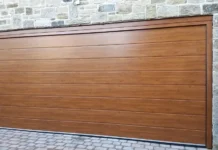Everyone who puts their house up for sale hopes it will sell fast and for a high price. But getting there requires more than just luck.
You need to put aside your personal feelings about the property so you can assess the needs and concerns of potential purchasers while you get your house ready to sell.
Ideally, you’ll need to plan and have gathered adequate home-selling knowledge to persuade potential buyers to make an offer.
Here are some steps to take in home selling to guarantee a quick sale and get the top price for your home.
5 Ways to Prepare your Home For Selling
1. Cleaning and Decluttering
Making your rooms appear as spacious as possible will help sell your home, especially if you have a large kitchen, bathroom, and storage space. Professional home stagers typically advise removing 50 percent or more of a client’s belongings before preparing a home.
Cleaning and arranging your home should be a top priority. Clean every nook and corner, including your kitchen and bathroom. While you are cleaning the bathroom, you should be careful disconnecting the power when removing an old hot tub from your house so that you may not add more work to your plate.
Refrain from assuming potential buyers won’t search cabinets, closets, attics, and basements. Use containers that can be slid under mattresses or stacked in a cellar or a closet. Cabinets with built-in baskets or cubbies help maintain order and cleanliness.
Furniture is also included in the decluttering process. Your furniture’s scale should equal that of the room, and potential customers need to move freely around the space without running into any of your pieces. It’s important to ensure that no objects are blocking entrances, windows, or other characteristics of the room’s architecture.
You may get rid of some extra furniture in your living area, like occasional tables and accent chairs. Relocation is never ideal, but try to keep in mind that it’s only temporary.
You should consider getting some outside help from a professional organizer if you feel overwhelmed by all the clutter. Toss, store, or give away: they can suggest which objects fit each category. Deep cleaning follows decluttering. The most efficient option to complete this task swiftly and completely may be to hire an expert as well.
2. Depersonalizing
Besides cleaning and getting rid of clutter, you should also consider depersonalizing your home. An ideal buyer will fall in love with your home when they set foot inside, imagining themselves there with their own furniture and things. When your home is decorated with unique touches.
Remove all personal effects from the room, including photographs, mementos, religious icons, awards, certifications, hobby equipment, and media collections, such as CDs and DVDs, to create a more objective atmosphere. A potential buyer should not feel uncomfortable or offended by your personal space or way of life.
If your interior design is too modern or too antiquated, you might also want to try changing your accessories and furniture. As a seller, you want to make sure prospective buyers aren’t distracted from your home’s best characteristics by the furniture and decorations currently inside.
3. Repairing and Restoring
Particularly if you’ve resided in a home for a while, regular wear and tear might accumulate. Houses may also have unnecessary stuff for which you can use self storage services. It’s simple to overlook odd things, like a squeaky door, a stuck window, or a toilet that flushes until you wiggle the handle.
However, buyers can view these peculiarities as issues that reduce the price of the house or as negotiating points during the closing stage. If there are too many obvious fixes, buyers might also assume there are more major problems hidden beneath the surface, which might discourage them from putting in a competitive offer.
Appliances in the kitchen should be in proper working order. Check that the doors and drawers function correctly by inspecting them. Drains, fixtures, and faucets in the bathroom and kitchen must be functional and leak-free. Tiles in showers and bathtubs should not be broken or in poor condition. Likewise, keep an eye out for water damage.
Examine the windows, eaves, weatherstripping, and exterior surfaces outside. Keep an eye out for deterioration like peeling, cracks, or decay. Patios and decks need to be in good shape. The fencing has to be free from rust or rot. Trim the landscaping away from your house to remove any chance of damage.
Some repairs, like fixing drywall or cleaning a clogged drain, may be simple do-it-yourself tasks. YouTube video instructions are a wonderful place to start if you’ve never made repairs like this before.
Hire a professional if the repairs are more complicated or severe. If your foundation is cracked, your outlets do not really work, or your roof leaks, hiring a professional with the necessary equipment and knowledge may ensure that the repairs are made correctly and save time. You should weigh the time and money required for repairs and upgrades against the increase in value of your home.
4. Painting
Re-painting a home can make it feel like you’re in a brand-new house. In fact, real estate professionals frequently advise home sellers to paint before putting their property on the market. Painting a room is a great way to make it seem more spacious and draw attention to interesting features like crown molding or trim.
However, choose your colors with care. Beige, gray, tan, gold, and “greige,” a combination of gray and beige, are mostly recommended as warm neutral colors by designers. These neutral tones will make it easier for potential purchasers to envision their own furnishings around the house.
Kitchens, bathrooms, entryways, and foyers are the most time-consuming areas to paint, so if you do not have enough time to complete the whole house, just focus on them. Scuff marks and stains on walls and baseboards may usually be fixed by applying a small amount of paint.
The majority of homeowners choose to do their own painting. Clean the dirt and debris off the walls, fix any holes or damage, tape off the trim with painter’s tape, and cover the furniture and flooring with a drop cloth to prepare the rooms for painting. Painting is relatively easy, but it can take a lot of time. To complete the process quickly and efficiently, consider hiring an expert.
5. Staging
The last step is to stage your house. The objective is to make a strong first impression so that homebuyers prioritize your home on their list. Your entire house does not need to be staged. Instead, concentrate on the living room, kitchen, master bedroom, and bathrooms, the places that potential buyers are most impressed by. Put a bowl of fresh fruits on the kitchen counter, and arrange the table with elegant tableware and tablecloths.
Put a beautiful blanket on the sofa’s arm and place a vase of flowers on the coffee table in the living room. Bathrooms should be updated with plush new towels and a dish of beautiful soaps. On the side of the master bed, place a tray with a newspaper and a teapot. Make a unique focal point in each area by showcasing an architectural feature, such as a chimney or lovely windows, or by hanging a straightforward piece of art that improves your staging.
Although staging is all about the finer points, you may need to replace your furniture if it is old or in poor shape. A smart time to replace a worn-out sofa, for instance, would be just before listing your property for sale. While your home is on the market, you also have the option of renting furniture. This can be a smart move if you’ve already shifted into your new house and the one you have to sell is empty.
Unfurnished rooms appear smaller, and putting furniture in a space makes it clearer to purchasers where they might put their own possessions. Additionally, staging enables you to give rooms a purpose by inspiring potential buyers with ideas for how they may use a spare bedroom, cellar, or nook. Select a function that would be interesting to your target audience.
Set up an extra bedroom as a playroom or nursery, for instance, if your house is a starting home in a neighborhood that caters to young families. If you want to sell homes to single people, consider adding a home gym or home office. Design and lifestyle are important to staging.
Staging the exterior as well to achieve your desired curb appeal. The moment a potential buyer first sets eyes on your home is crucial. Cut the grass, prune the plants, and turn the mulch. Plant colorful flowers on the front lawn or in planters on your porch to welcome visitors and brighten the area. Wreaths and holiday lights are great for adding a seasonal touch this winter.
Final Words
Use this guide to prepare your home for sale, and you’ll be pleased with the offers you receive from the first few potential buyers. Let us know about your home-selling experience to inspire our readers.














